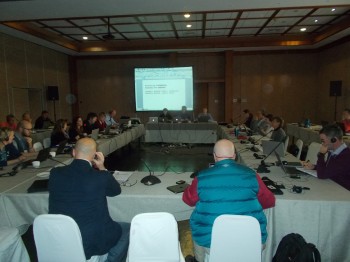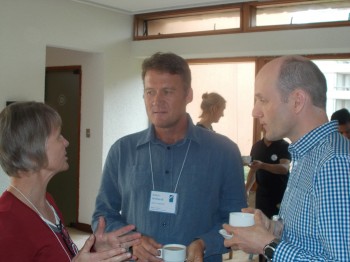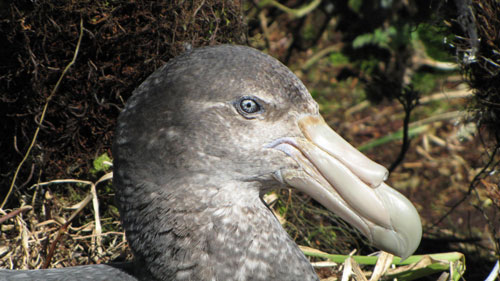Sebastián Jiménez (Recursos Pelágicos, Dirección Nacional de Recursos Acuáticos , Montevideo, Uruguay) and colleagues will be tabling an Information Paper (SBWG7 Inf 23.5) at the Seventh Meeting of ACAP’s Seabird Bycatch Working Group in Chile this week that reports on Uruguay’s update of its National Plan of Action for Reducing Incidental Catch of Seabirds in Longline Fisheries (previously reported in ACAP Latest News – click here).
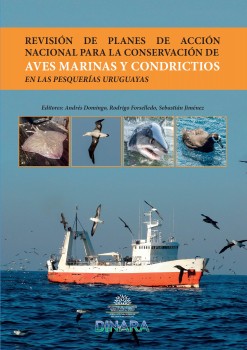
The Information Paper’s summary follows:
“Uruguay has recently revised the NPOA-Seabirds. The NPOA-Seabirds 2015 establishes the following mitigation measures. Vessels operating with pelagic longline: obligatorily use of I) night setting in combination with at least one of the following two measures: II) bird scaring line and / or III) weight ≥60 g attached in the branch lines within 1 m of the hook. Vessels operating with demersal longline fishing for Patagonian toothfish (Dissostichus eleginoides) and related species: i) Mammals and Birds Excluding Device (DEMA, i.e. drop lines with nets) or II) minimum weight on the line that ensures sink rate ≥ 0.3m/s at 10 m depth, in combination with one of the following two measures: A) bird scaring line or B) night setting. In the event that other demersal longline or semi-pelagic fisheries start operating in the near future, mitigation measures are as follow: I) minimum weight on the line in combination with one of the following two measures: A) bird scaring line or B) night setting. The impact of the trawl fishery for Argentinean hake (Merluccius hubbsi) is currently under research. Under a precautionary approach, to reduce seabird mortality in trawl cables the use of the following mitigation measures is recommended: I) bird scaring line and II) reduce discards. In order to reduce the capture of birds on the net the following measures are recommended: I) cleaning up the net before setting and II) reduce the exposure time of the net on the surface of the sea.”
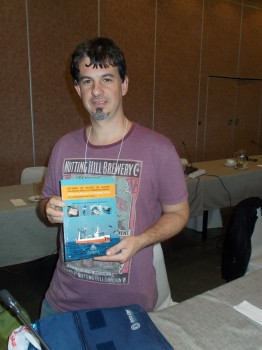
Sebastián Jiménez holds up a copy of Uruguay's revised NPOA-Seabirds at the Chile meeting
References:
Domingo, A., Forselledo, R., Jiménez, S. (Eds). 2015. Revisión de planes de acción nacional para la conservación de aves marinas y condrictios en las pesquerías uruguayas. Montevideo: Dirección Nacional de Recursos Acuáticos. 196 pp
Domingo, A., Jiménez, S. & Passadore, A. 2006 (online) & 2007 (paper). Plan de Acción Nacional para Reducir la Captura Incidental de Aves Marinas en las Pesquerías Uruguayas. Dirreción Nacional de Recurcos Acuáticos. 75 pp.
Jiménez, S., Pin, O. & Domingo, A. 2015. Plan de Acción Nacional para Reducir la Captura Incidental de Aves Marinas en las Pesquerías Uruguayas, 2015. In: Domingo, A., Forselledo, R. & Jiménez, S. (Eds). Revisión de Planes de Acción Nacional para la Conservación de Aves Marinas y Condrictios en las Pesquerías Uruguayas. Montevideo: Dirección Nacional de Recursos Acuáticos. pp. 11-79.
Jiménez, S., Pin, O. & Domingo, A. 2016. Revised National Plan of Action to Reduce Seabirds Bycatch in Uruguayan fisheries (NPOA-Seabirds 2015). Seventh Meeting of the Seabird Bycatch Working Group La Serena, Chile, 2 - 4 May 2016. SBWG7 Inf 23. 5 pp.
John Cooper, ACAP Information Officer, 03 May 2016

 English
English  Français
Français  Español
Español 
